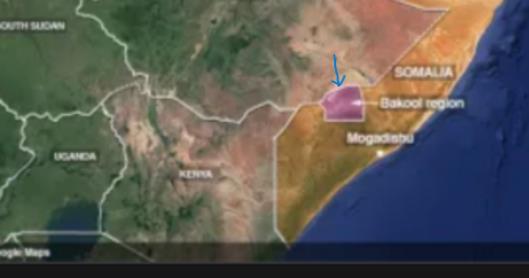
Ethiopia To Create Buffer Zone Inside Somalia Proper
A local Somali official has welcomed a plan by Ethiopia's Somali state to create a buffer zone along the border inside Somalia to fight militant group al-Shabab. The plan was announced Thursday, a week after hundreds of Somali militants launched a cross-border attack that Ethiopian authorities say they repelled.
Somalia's federal officials have yet to comment on an Ethiopian buffer zone inside their country and some security analysts warn it could create more tension.
The president of Ethiopia's Somali state, Mustafe Omar, has announced that his administration will create a buffer zone inside Somalia to prevent al-Shabab militants from entering Ethiopia again.
He was speaking to media at the front, flanked by his senior security commanders.
He said al-Shabab fighters entered the region from several directions last week but have been beaten badly and security forces are searching for their remnants.
Omar said“the first phase” of the fighting has been concluded, and outlined the next step Ethiopia plans to take.
He said the second phase will be to create a security buffer zone inside Somalia that is free of terrorists because, he says, we can't wait for the enemy here.
Mohamed Moalim Ahmed is mayor of Hudur, the capital of Somalia's Bakol region, which borders Ethiopia. He said Friday that the regional administration welcomes the plan by Ethiopia's Somali state to create a buffer zone inside Somalia to fight al-Shabab terrorists.
Speaking with VOA via phone, Ahmed said that they are ready to work with the Ethiopia's Liyu security forces to defeat al-Shabab.
“We, the government of the southwest state of Somalia, are ready to work with the Liyu police to unite and come together to fight [al-Shabab],” Ahmed said.“We don't see a problem if the security forces of the Somali region of Ethiopia reside in our areas and public fear regarding their coming will be discussed to avoid harming the civilians and only target the enemy.”
Liyu police have been present in Somali border towns for some time, and it was not clear what steps Ethiopian authorities would take to establish a formal buffer zone.
Abdiwahab Sheikh Abdisamad, a Horn of Africa strategic studies analyst and African affairs commentator, told VOA via WhatsApp that creating a buffer zone inside Somalia is a bad idea.
“Maybe the idea of joint military exercises between Somali national army and Liyu police I think is sellable to the Somali public but creating buffer zone inside Somalia is not noble idea and I don't think that will work,” Abdisamad said.“That will create unnecessary tension between the two countries and must be avoided.”
“Why right now? What is the significance of creating a buffer zone? What is the idea? Who is pushing the idea itself?,” Abdisamad added.“In the longer run, it creates a new problem between the two states.”
Somalia's federal government has not commented on the proposed buffer zone but the new prime minister, Hamza Abdi Barre, has ordered security agencies to respond to al-Shabab attacks in the border towns in the Bakol region.
Security forces in Ethiopia said they killed more than 100 al-Shabab militants after they crossed into eastern Ethiopia last week. U.S. assessments suggest the Shabab fighters may have penetrated as far as 150 kilometers into Ethiopia before being stopped.
Meanwhile, al-Shabab said Friday that it attacked the town of Aato, near the Somali border with Ethiopia.
Residents told VOA that they have heard multiple explosions and heavy fire exchanges. Casualties are yet unknown.
Al-Shabab has been fighting the Somali government and African Union troops in Somalia for more than 15 years, carrying out attacks in Somalia and neighboring Kenya.
Experts believe that the group's attack in Ethiopia is meant to show the group is still very dangerous to the security of Horn of African countries.
By Mohamed Dhaysane
VOA

Legal Disclaimer:
MENAFN provides the information “as is” without warranty of any kind. We do not accept any responsibility or liability for the accuracy, content, images, videos, licenses, completeness, legality, or reliability of the information contained in this article. If you have any complaints or copyright issues related to this article, kindly contact the provider above.
Most popular stories
Market Research

- Manuka Honey Market Report 2024, Industry Growth, Size, Share, Top Compan...
- Modular Kitchen Market 2024, Industry Growth, Share, Size, Key Players An...
- Acrylamide Production Cost Analysis Report: A Comprehensive Assessment Of...
- Fish Sauce Market 2024, Industry Trends, Growth, Demand And Analysis Repo...
- Australia Foreign Exchange Market Size, Growth, Industry Demand And Forec...
- Cold Pressed Oil Market Trends 2024, Leading Companies Share, Size And Fo...
- Pasta Sauce Market 2024, Industry Growth, Share, Size, Key Players Analys...





















Comments
No comment